
As much as parents all over the world want to protect their little ones, healthy exploration at such an early stage brings about many potential dangers, one of them being choking. This article analyzes codable choking risks and how they may be minimized. There are some specific objects and food types that consistently bring about choking in little children, which will later be outlined along with specific prevention methods to be implemented, and some useful hints on how to make environments safer for caregivers will also be provided. Knowing these risks helps parents and guardians mitigate harm for the toddlers in their care.
What are the Common Choking Hazards for Toddlers?
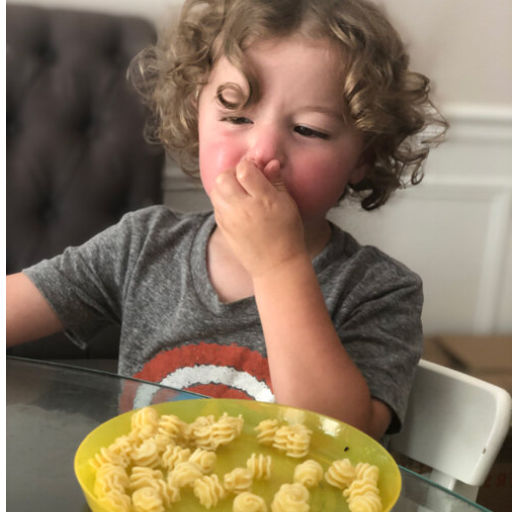
Choking hazards for toddlers usually fall under two categories: food-related and non-food items. Some of the food-related risks include small, intricate pieces like nuts, hot dogs, grapes, and cheese chunks that pose a risk of obstructing one's airway, along with slippery foods such as hard candies and popcorn. A non-food risk includes coins, buttons, beads, marbles and toy parts that do not add up to 1.75 inches in size, which is the average space a toddler’s throat can take in. This presented risk gives me maximum convenience in managing common risks for toddlers as caregivers can take adequate measures to prevent choking.
Understanding Choking Hazards for Babies and Toddlers
I supervise my children during mealtime. I am responsible for monitoring whether my child is eating foods with high choking hazard risks, such as popcorn, nuts, whole grapes, and even cheese and meat chunks. Not only do I cut the foods into manageable pieces, but also restrict the height of them to half an inch minimum. Consequently, with these managed risks, my child can learn to properly chew, and I will provide age-suitable textures when I feel it is necessary. Likewise, I put away everyday choking risk items such as buttons, coins, and detachable balloons and toys to ensure a childproof environment. I strive to keep my child away from environments that present a risk of these risks.
Identifying Small Objects that May Cause Choking
Determining what small items that could pose a choking hazard is straightforward. I scrutinize anything that can be fitted into a toilet paper roll, including marbles, pen caps, small batteries, beads, and parts that come from toys. Also, foods tend to be giveaways, especially whole grapes, hotdogs, nuts, and hard candies. These need to be monitored closely or cut up as necessary. All in all, keeping a watchful eye and checking up regularly allows me to reduce my child’s exposure to choking, unforgiving items.
Why Whole Grapes and Hot Dogs are High-Risk Foods
Hungry children are at risk of choking on hot dogs and grapes because of their size and shape. Hot dogs are sometimes sliced into rounds and resemble small tracheas. This compact form contributes to the risk of choking when swallowed without care. The transverse shape of these foods is easy to compress and, therefore, perilous regarding airway obstruction. An effective solution to this problem involves slicing the hot dogs into strips rather than rounds. Also, for choking on grapes to be exceptionally avoided, the grapes must be cut lengthwise into four pieces. In addition, round-shaped objects with a breadth of more than 1.25 inches do not pose a choking risk and are considered safe for children. These methods are efficient, especially when combined with proper supervision.
How Can I Prevent Choking Hazards for Toddlers?
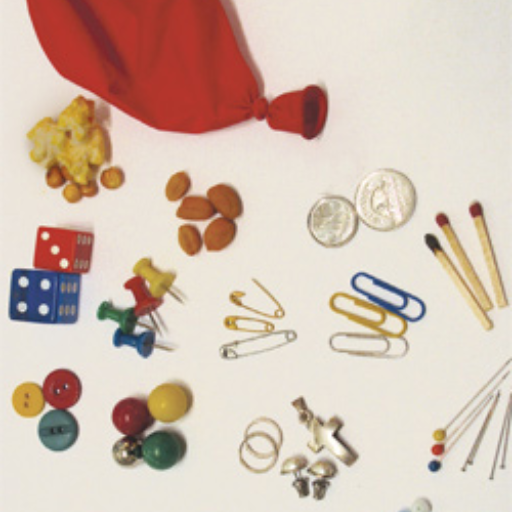
Taking proactive and responsive measures for toddlers can help prevent the risk of choking or any related incidences. Food given to toddlers should be easily chewable, thus avoiding round, hard, or sticky foods. Snacks and meals should also be supervised to guarantee no distractions around the toddler. In addition, having at least basic knowledge of infant and toddler CPR is also beneficial in emergency scenarios. Additionally, never place items like coins, buttons, or small toys within reach as these are additional choking hazards. Following these measures consistently,legislation can significantly minimize the chances of a choking situation.
Safe Practices for Feeding Babies and Young Children
- Proper Food Preparation: Always prepare food to minimize the risk of choking. Cut food into small pieces, approximately 1/4 inch for infants and 1/2 inch for toddlers, to make them easier to chew and swallow. Avoid hard, sticky, or round foods such as whole grapes, popcorn, nuts, and chunks of hot dogs.
- Supervised Eating: Ensure babies and young children sit upright during meals and snacks. Supervise them closely while eating, and encourage slow, deliberate chewing to prevent the accidental aspiration of food.
- Safe Feeding Tools: Use age-appropriate feeding utensils and dishes designed for young children, usually smaller, softer, and free of small detachable parts. Bottles and sippy cups should have secure fittings to avoid leaks or spills that can cause choking.
- Avoid Small Objects: Keep non-food items like coins, small toy parts, batteries, and other objects less than 1.25 inches in diameter or 2.25 inches long out of children's reach. These dimensions follow the general choking hazard guidelines provided by safety experts.
- Monitor Developmental Readiness: Gradually introduce new foods and textures based on the child’s developmental milestones. Ensure the child demonstrates appropriate chewing and swallowing skills before transitioning to more complex foods.
- Learn Emergency Techniques: Familiarize yourself with choking first aid protocols, including back blows and chest thrusts for infants and Heimlich maneuver techniques for toddlers. Having this knowledge is crucial for responding promptly in case of an emergency.
By following these guidelines and maintaining vigilance, caregivers can create a safer feeding environment for babies and young children, significantly reducing the risk of choking.
The Importance of Supervision During Mealtime
Ensuring children’s safety during meals is extremely important. I monitor them as they eat, as choking can occur very quickly. I check their chewing and swallowing to ensure kids eat correctly according to their developmental stage. Phones and multitasking arenot a problem because the children’s concentrated eating makes it so. Not only does this help with avoiding choking, but kids also learn to eat positively and healthily, which makes my mealtime enjoyable.
How Cutting Food Can Reduce Choking Risks
One of the best ways to decrease the risk of toddlers choking when eating is to cut the food into appropriate bite-sized pieces. Out of all the things I mentioned above, grapes, cherry tomatoes, and even hotdogs are my favorites. According to health professionals, I can further recommend that hotdogs and cherry tomatoes be cut into slices and subsequently diced into inch pieces (1.27 cm) across. Carrots and apples can be a little tricky to eat due to their hardness, therefore, I prefer chopping, shredding, and softening them to make them less obtrusive. Doing this ensures that food is being cut and prepared appropriately for children to chew and swallow, all while helping them learn how to eat independently of their parents.
What Foods Should I Avoid Feeding My Toddler?
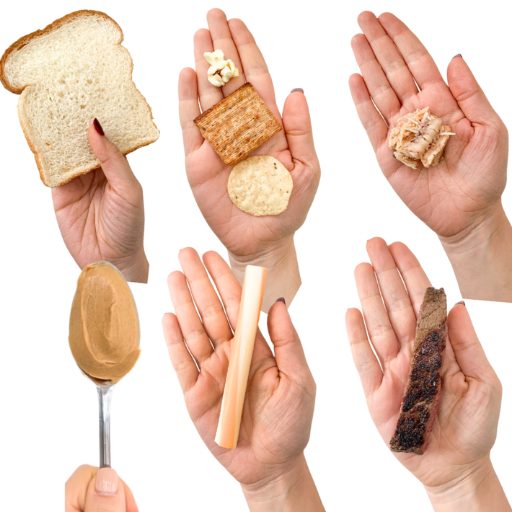
First off, toddlers are at risk of choking. Therefore, never let them have nuts, hard candy, gum, chunks of cheese, popcorn or beef. Moreover, never allow them to have large globs of butter and marshmallows since they can get stuck in their throat. Children must also not be given raw vegetables like carrots, celery sticks, or even small fruits like cherries and grapes. However, if the vegetables are cut into small, child-sized pieces, it would be safe. By cutting these foods out, the chances of a toddler getting choked while eating will be lowered substantially.
Understanding Foods to Avoid for Young Children
While considering food choices for younger children, the following factors should be prioritized: Choking hazards, digestive issues, and allergies. Children are more sensitive to choking regarding food’s shape, size, and texture. Small, round, or hard foods, like raw carrots, whole grapes, and cherry tomatoes, can be potentially dangerous if not sliced into bite-sized pieces measuring no more significant than ½ inch. Difficulties come with popcorn and whole nuts, which can be a choking hazard and can not be ‘chewed,’ making them inappropriate for consumption.
Sticky and thick foods are just as dangerous as popcorn or nuts. Foods like peanut butter should be avoided in large servings as they can easily block the throat. Thick peanut butter can be made thinner with water or directly spread on bread to lessen the risk of choking. Processed high salt and sugar-containing foods such as sugary snacks or chips should be avoided to protect the child's developing kidneys and teeth. For toddlers, The American Academy of Pediatrics (AAP) strongly recommends no more than 2.3 grams of sodium or 25 grams of sugar increment in intake per day to benefit significantly their bodily growth.
Finally, possible food allergies like peanuts and tree nuts, eggs, shellfish, and dairy should be introduced carefully and only as a pediatric consultant recommends. One should keenly watch for symptoms like swelling, rash, or changes in bowel habits after the first introduction. Such guidelines help guarantee safety and nutritional completeness for children during all meals.
The Dangers of Peanut Butter and Candy
Due to peanut butter’s stick and thick texture, children can choke on it if it is not thinned and consumed in bits. For toddlers, it is best to mix the peanut butter with water or other liquids to serve it as a primary dip, which increases the likelihood of its consumption without worrying about choking. On the other side, candy bears significant risks ranging from dental decay due to moisture-loving bacteria that feed on excess sugar to sugar itself. Hard candies are some of the worst ones to consume since they can be lodged in one’s throat, along with sticky or gummy candies that adhere to teeth and create cavities.
Technical Parameters for Safe Consumption:
- Peanut Butter: Ensure a serving size for toddlers is no more than 1 tablespoon, thinned with water or evenly spread.
- Added Sugar in Candy: Limit added sugar to less than 25 grams daily, as the AAP recommends, to avoid strain on developing kidneys and prevent dental issues.
- Choking Hazards: Avoid serving children hard candies or sticky sweets until they are at least 4 years old, as their choking risk remains high during early childhood development.
Adhering to these guidelines promotes both safety and balanced nutrition.
Why Raw Vegetables Can Be a Choking Hazard
Raw vegetables can pose a choking risk, particularly for young children, due to their hard texture and size, which may make them difficult to chew and swallow effectively. Common culprits include carrots, celery, and other firm vegetables that can potentially block the airway if consumed in large, unprocessed pieces. Proper preparation significantly mitigates this risk, ensuring safer consumption.
Technical Parameters for Safe Consumption of Raw Vegetables:
- Preparation Method: Slice or shred raw vegetables into thin, manageable pieces or steam them slightly to soften the texture without compromising nutritional value.
- Appropriate Serving Size: Ensure bite-sized portions no more significant than 1/2 inch in diameter for toddlers and young children to reduce the risk of choking.
- Age Recommendations: Introduce raw vegetables in their whole form only after a child can chew effectively, typically around 4.
- Supervision During Meals: Monitor children closely during meals to ensure proper chewing and avoid any risk of choking.
Adhere to these guidelines; raw vegetables can be safely included in a healthy, balanced diet.
How Does Baby-Led Weaning Affect Choking Risks?

Infants transitioning to solid foods through BLW do not exhibit a greater risk of choking than those fed with moderate purees, so long as appropriate foods for the child’s age are provided. Essential considerations include providing soft foods shaped like sticks or slices that are easy to hold and not likely to cause choking and having the infant upright during feeding. BLW encourages self-regulation of eating and the skill of chewing food at an early age, which cumulatively reduces the risks of choking as time passes. Regardless of the feeding strategy employed, constant supervision during mealtime remains essential for safety.
The Role of Chewing and Swallowing in Choking Prevention
Both chewing and swallowing reduce the chances of choking on food, as both break down food into small and manageable pieces. Saliva mixing with food further aids in the passage of food through the throat. From a technical perspective, proper chewing allows for breaking down food into boluses around 1-2 cm in diameter. Preventing airway obstructions involves coordinated swallowing mechanisms, which also play a part in the process. The epiglottis seals the airway while one ingests food. Providing soft foods or a sitting place free from distractions encourages these strategies. To ensure the efficient functioning of these mechanisms, supervision and attention are vital during meal times.
Assessing Choking Risks with Solid Foods
When evaluating choking risks associated with solid foods, it is essential to consider several factors, including food size, shape, texture, and the developmental abilities of the individual consuming the food. Small, hard, round, sticky, or slippery foods—such as whole grapes, nuts, raw carrots, popcorn, or chunks of hot dogs—pose the highest risk as they can easily block the airway.
Technical Parameters for Assessing Food Risks:
- Size: Food should ideally be cut into pieces no larger than 1.5 cm in diameter for children under five years old to reduce the likelihood of airway obstruction.
- Shape: Avoid foods with cylindrical or spherical shapes, as these fit tightly in the trachea. Slice such items, like grapes or cherry tomatoes, into thin, lengthwise segments.
- Texture: Hard or sticky foods need to be modified. Steam or cook vegetables (like carrots) until soft, and avoid sticky items like peanut butter served in thick dollops.
- Toughness: Whenever possible, remove the skin and seeds from fruits and vegetables, as these can create barriers to proper chewing and swallowing.
Moreover, there is a need to assess the individual's specific strengths. For example, children younger than four years may not have developed molars and, as such, can barely grind food enough for chewing. In people with dysphagia, solid foods ought to be pureed or mashed to lower the risk of complications.
Also, monitoring patients on meals and eliminating all forms of disturbance, for example, speaking or cracking jokes while eating, greatly reduces danger. Those mentioned above and other measures to protect the eater-catchers environment can reduce and regulate choking problems related to solid meals.
When Should I Be Concerned About Choking Hazards?
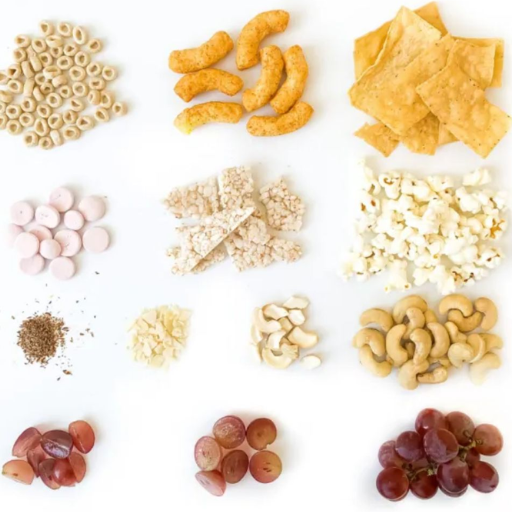
Choking hazard concerns arise if the individual shows difficulty managing food or other objects in their mouth. Warning signs include constant coughing, gagging, attempting to swallow in distress, and other behaviors such as wheezing or making high-pitched sounds, which indicate airway obstruction. Children under 4 years of age, people suffering from dysphagia, and those with limited motor control or cognitive ability require more attention. Coping strategies such as providing food with adequate supervision can help manage the risk of choking before it escalates into an emergency.
Recognizing Signs of Choking in Infants and Young Children
Choking occurs when an object, typically food or a small item, becomes lodged in the airway, partially or fully obstructing the air flow. Recognizing the signs of choking is critical to ensuring swift and appropriate intervention. Below are the key indicators to watch for, categorized by partial and complete airway obstruction:
Signs of Partial Airway Obstruction:
- Audible Coughing - The child is coughing forcefully to expel the object.
- Wheezing or High-Pitched Breathing Sounds (Stridor) occurs when air partially passes through the narrowed airway.
- Crying or Vocal Sounds - If the child can cry or make sounds, the airway is not completely blocked.
- Distressed Behavior - The infant may panic, wave their arms, or seem visibly distressed.
Signs of Complete Airway Obstruction:
- Silent Cough or No Sounds - A complete blockage prevents coughing or vocalization.
- Hands Grasping at the Throat - This universal choking sign is often instinctive.
- Cyanosis - Blue or purplish skin, lips, or nail beds discoloration due to lack of oxygen.
- Loss of Consciousness - The child may lose consciousness if the obstruction is unrelieved.
Technical Parameters and Response Timing:
- Time to Action: Brain damage may begin within 4-6 minutes of oxygen deprivation; immediate response is critical.
- Airway Diameter Matters: The trachea of infants and young children is smaller, with diameters ranging from approximately 4-6 mm in infants, making them more prone to choking on small objects.
- Common Obstruction Items:
- Food (e.g., nuts, grapes, hot dogs, and chunks of meat)
- Toys and small parts (e.g., buttons, beads)
- Household items (e.g., coins, batteries)
Being vigilant about these signs and understanding the technical factors involved in airway obstruction can save lives. If choking is suspected, it is crucial to act quickly and knowledgeably by following established guidelines for choking first aid, such as back blows and chest compressions for infants or the Heimlich maneuver for older children.
What to Do if Your Child Chokes
If your child chokes, the first step is to remain calm. Assess whether your child can cough, cry, or speak—if they can, encourage them to keep coughing as this may dislodge the object. If the airway is completely blocked and the child is under one year old, place them face-down along your forearm, supporting their head, and deliver five back blows between the shoulder blades using the heel of your hand. If this does not work, turn the infant onto their back and give five chest thrusts using two fingers just below the nipple line. For children over one-year-old, perform the Heimlich maneuver by standing behind them, making a fist, and applying quick, upward abdominal thrusts just above the navel. Always call emergency services if the object does not come out or if the child becomes unresponsive, and begin CPR if necessary. Make sure to seek medical attention even after removing the object to ensure no further complications.
References
-
CDC - Choking Hazards | Infant and Toddler Nutrition This page provides detailed information on foods and other items that pose choking risks for young children.
-
New York State Department of Health - Choking Prevention for Children It discusses common choking hazards, including toys, household items, and foods, and offers prevention tips.
-
California Department of Public Health - Choking Prevention for Young Children This resource highlights the most common choking hazards and guides prevention.
Frequently Asked Questions (FAQ)
Q: What are the most common potential choking hazards for toddlers?
A: Small objects and certain foods can pose choking hazards to toddlers. Items like toys with small parts, hard candies, and popcorn kernels and pretzels can pose a risk of choking. To reduce these risks, always supervise your toddler during play and meals.Q: Why is it important to be aware of the risk of choking for children under the age of 4?
A: Children under the age of 4 have smaller airways, and their chewing and swallowing skills are still developing, making them more susceptible to choking. Awareness of potential choking hazards helps prevent accidents and ensures a safer environment for their growth and development.Q: Which foods are considered significant choking hazards for children under 4?
A: Common foods that can become a choking hazard include whole grapes, nuts, popcorn, raw carrots, and hot dogs. Cutting these foods into small pieces or avoiding them altogether for children younger than four is essential.Q: How can parents prevent their baby or toddler from choking during meals and snacks?
A: To prevent choking, serve meals and snacks in small, manageable pieces. Ensure your child is sitting upright while eating and supervise them closely. Avoid giving them hard, round, or sticky foods that can quickly get stuck in the throat.Q: What should I do if my child is choking on certain foods?
A: If your child is choking, call emergency services immediately and, if trained, perform back blows and chest thrusts. Learning CPR is also advisable to handle emergencies effectively.Q: Are there safer food alternatives for toddlers to reduce choking risks?
A: Yes, you can offer pureed foods or foods like soft fruits and cooked vegetables that are easy to chew and swallow. Always ensure that foods are cut into small, age-appropriate pieces.Q: How can toys become a choking hazard for toddlers?
A: Toys with small parts, buttons, or detachable pieces can quickly get stuck in a toddler's airway. It's crucial to check toy labels for age recommendations and ensure they do not have small parts that could pose a choking risk.Q: What is the role of a pediatrician in preventing choking incidents?
A: A pediatrician can provide guidance on safe eating practices for your toddler, recommend appropriate foods for their age, and advise on the proper response in case of a choking incident, contributing significantly to your child's safety and development.Q: When can children safely start eating solid table foods?
A: Most children can start eating solid table foods between the ages of 9 to 12 months, but it’s essential to introduce them gradually and ensure they are soft and cut into small pieces. Consult with your pediatrician to align this with your child's development.





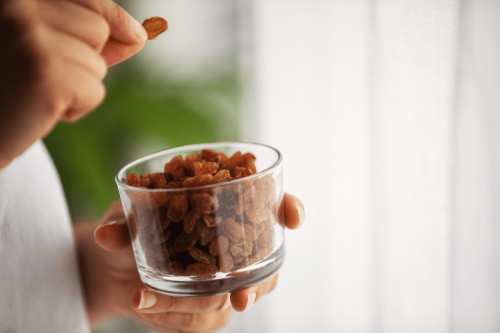

 Login with Google
Login with Google Login with Facebook
Login with Facebook